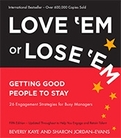BK Blog Post
Five Common Convening Mistakes
 Posted by
Jeevan Sivasubramaniam,
Vice President, Editorial,
Berrett-Koehler Publishers Inc.
Posted by
Jeevan Sivasubramaniam,
Vice President, Editorial,
Berrett-Koehler Publishers Inc.

Craig and Patricia Neal have been organizing gatherings and meetings for decades across the nation and have a pretty solid idea of what works and what doesn't. However, even seasoned conveners still make mistakes when bringing people together.
In this entry, Patricia and Craig list the Five Most Common Convening Mistakes (and How to Avoid Them):
1. Not "Staying Connected": Convening is about being open to relationship rather than closed. It is a challenge to choose to stay connected and open when our lives and schedules are full and our time is precious. Stay connected by knowing who you are and how you want to be in relationship with others. You always have a choice when you walk into a meeting: do you want to be connected, or stay closed? Choosing connection can lead to collaboration, creativity, purposeful outcomes.
2. Fearing Rejection: The fear of rejection can derail our ability to extend a wholehearted and sincere invitation. Invite often - for all kinds of things - and experience acceptance and rejection as others’ freedom to choose rather than a personal success or failure. We often think that colleagues are too busy to talk beyond the cursory business at hand, but when we persevere, people are grateful for the opportunity to catch up and reconnect. Our fear of rejection, rather than rejection itself, was holding us back.
3. Making Assumptions: We say “assume and doom.” When we assume others know what a gathering’s all about, we put our gathering squarely in the realm of the unknown. Make the purpose and desired activity for a gathering as clear and explicit as possible - even if it seems unnecessary. At one important meeting, knowing we had only an hour, we jumped right into the action items. We neglected to set the context, assuming we were all on the same page. At the end of the meeting, people had different understandings of the purpose of the meeting and were not aligned in a commitment to action.
4. Reluctance to Impose Our Will on Others: “You’re not the boss of me!” How often have we said or heard words like that? But providing structure, environment and terms of engagement is a crucial part of convening. People need structure. If there is no structure, people look to create it. At a recent family gathering, we felt we should not be too controlling, but this led to a lack of clarity in stating the terms of engagement or agreements for a discussion. Everyone jumped in, in their own way, with cross-chatter and began talking over one another. It would have been better to state our expectations ahead of time to enable all people to be heard.
5. Impatience and Judgment: The compelling desire to “Just get on with it!” can rush us obliviously past the most important pieces of wisdom and capability present in our gathering. Remember, anyone included is equally important and essential. At the beginning of most meetings we do a check-in to hear from everyone. This one time we were 15 minutes late. we suggested we skip the check-in and move right into the agenda. Halfway through the meeting we realized we didn’t have everyone’s attention and didn’t have the necessary alignment to make important decisions we were there to make.
There are actually four other scenarios that generate obstacles for effective convening but we chose the the five most common. What do you think? Did we choose the five most common? Do you have any feedback or ideas for us?






